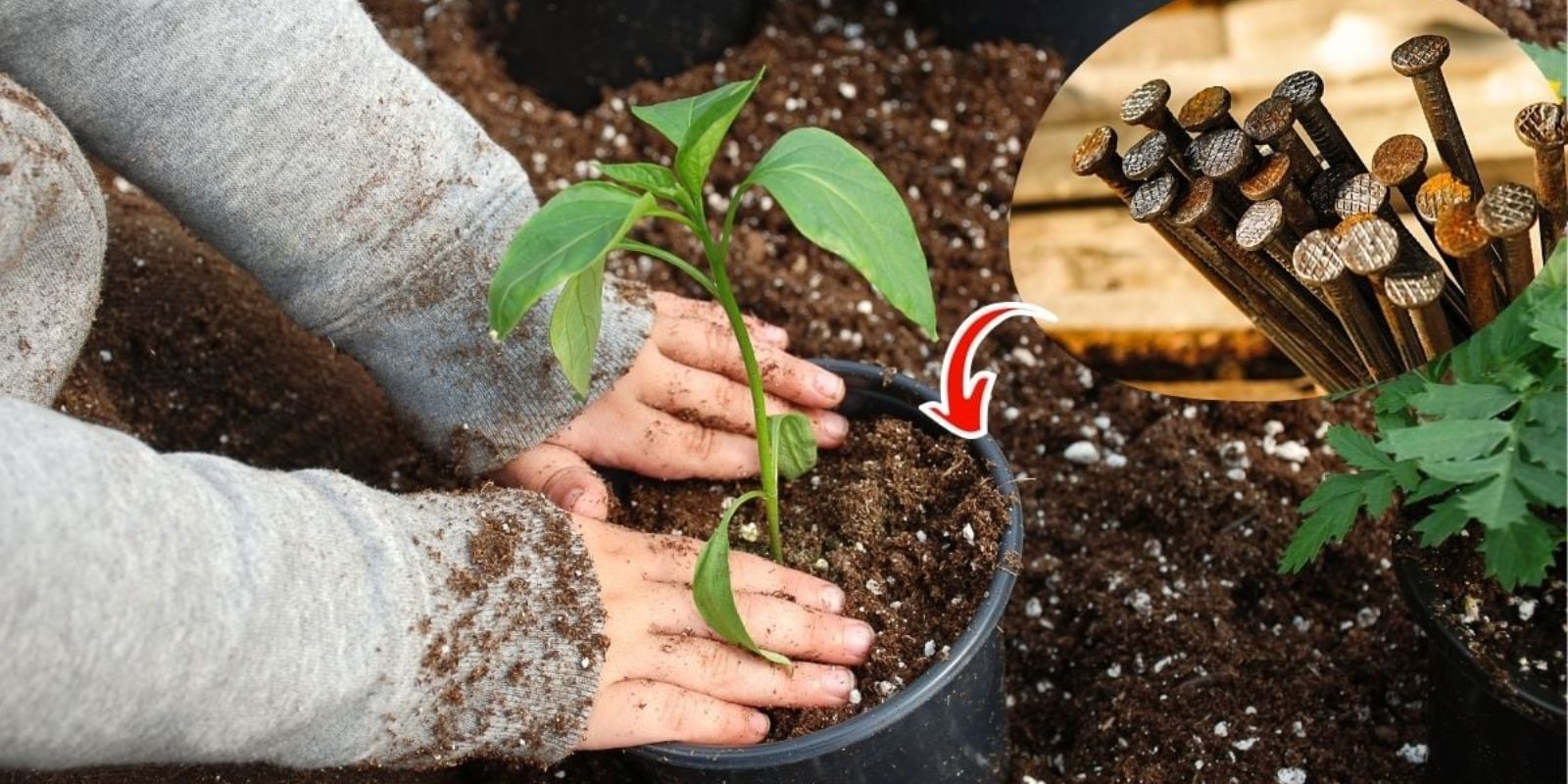Rusty nails might seem like mere scrap metal, but they hold a hidden treasure for gardeners looking to boost their soil’s nutrient content. By transforming these old, rusty nails into a potent plant booster, you can provide your garden with much-needed iron and improve plant health. This article will guide you through the process of creating iron-enriched water from rusty nails and explain the benefits it can bring to your garden.
Understanding the Benefits of Iron for Plants
Iron is a crucial micronutrient for plant growth. It plays a key role in chlorophyll production, which is essential for photosynthesis. Without adequate iron, plants can suffer from chlorosis, characterized by yellowing leaves and stunted growth. By adding iron to your garden soil, you can enhance plant health, improve leaf color, and promote robust growth.
How Rusty Nails Provide Nutrients
Rusty nails, composed primarily of iron, can be an excellent source of iron for your plants. When rust (iron oxide) dissolves in water, it releases iron ions that are accessible to plant roots. This process effectively turns waste metal into a valuable garden resource.
Steps to Transform Rusty Nails into a Plant Booster
1. Collect Rusty Nails
- Gather Materials: Collect old, rusty nails or iron scraps from your garage or shed. Ensure they are free from coatings or paints, as these could affect the quality of the iron infusion.
- Safety Precautions: Wear gloves while handling rusty nails to avoid injury or rust-related issues.
2. Soak the Nails in Water
- Prepare a Container: Choose a container that can hold the nails and enough water to cover them completely. A plastic bucket or an old pot works well for this purpose.
- Add the Nails: Place the rusty nails into the container.
- Fill with Water: Pour enough water over the nails to submerge them fully. The water should be clean and free of any chemicals or contaminants.
- Soak Time: Allow the nails to soak in the water for 1-2 weeks. This soaking period allows the rust to dissolve into the water, creating an iron-rich solution.
3. Strain the Solution
- Remove Nails: After the soaking period, carefully remove the nails from the water. Use tongs or a sieve to avoid touching the rusty nails directly.
- Filter the Water: Strain the water through a fine mesh strainer or cheesecloth to remove any remaining debris or rust particles. The resulting liquid will be rich in iron and ready for use in your garden.
4. Apply to Soil
- Application Method: Use the iron-enriched water to irrigate your garden soil. Pour the solution evenly over the soil, ensuring it reaches the root zone of your plants.
- Frequency: Apply the solution once every 4-6 weeks, depending on your garden’s needs and the health of your plants.
- Avoid Overuse: While iron is beneficial, excessive amounts can be harmful. Stick to the recommended application frequency to prevent any potential negative effects.
5. Monitor Plant Health
- Observe Changes: After applying the iron-enriched water, monitor your plants for signs of improvement. Look for enhanced leaf color, reduced yellowing, and overall healthier growth.
- Adjust Care: Continue to care for your plants with regular watering, appropriate fertilization, and proper sunlight to maximize the benefits of the iron treatment.
Additional Tips for Success
- Check Soil pH: Iron availability to plants can be affected by soil pH. Ideally, the soil should be slightly acidic to neutral (pH 6.0-7.0) for optimal iron uptake.
- Combine with Other Nutrients: While iron is essential, a balanced nutrient approach is best for plant health. Consider using a comprehensive fertilizer that includes other necessary nutrients.
- Recycle Wisely: In addition to using rusty nails, consider other forms of recycling and repurposing in your garden, such as composting kitchen scraps or using old containers for plant pots.
Troubleshooting Common Issues
1. Cloudy or Murky Solution: If the iron-enriched water appears cloudy or murky, strain it again to ensure it is clear and free of excess debris. Cloudiness may indicate high concentrations of rust particles.
2. Plant Discoloration: If your plants show signs of discoloration or stress after application, reduce the frequency of use and check for other factors affecting plant health, such as water quality or soil conditions.
3. Soil Saturation: Avoid overwatering your garden with the iron solution. Excessive moisture can lead to waterlogged soil, which can negatively impact plant roots.
Conclusion
Transforming rusty nails into a nutrient-rich plant booster is an innovative and eco-friendly way to enhance your garden’s health. By following these simple steps, you can create an iron-enriched water solution that supports robust plant growth, vibrant foliage, and overall garden vitality. Not only does this method provide essential nutrients, but it also demonstrates how recycling and repurposing can contribute to a sustainable gardening practice.
Call to Action:
Give your garden a natural boost with iron-enriched water and share your success stories with fellow gardeners! 🌱🔧 Watch your plants flourish with this ingenious and eco-friendly gardening tip.

